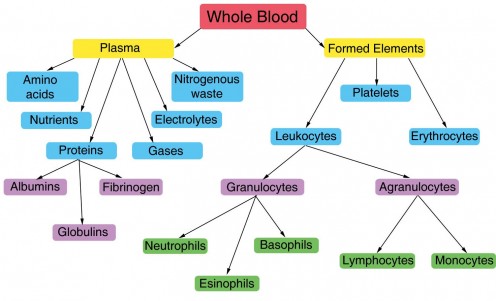Red Blood cells or Erythrocytes (RBC) constitute major part of the formed elements. They are non nucleated tiny biconcave disc in mammals except camel and llama (oval shaped ).
The function of RBC is to carry oxygen from the lungs to the tissues and CO2 from the tissues to the lungs. This is due to the presence of haemoglobin. RBC also participates in the transport of carbon dioxide as bicarbonates.
White Blood Cells (WBC) or Corpuscles are also known as leucocytes. Their number is much less than RBC (the ratio of WBC and RBC 1: 600). WBC provides defence mechanism to the body against infection.
Based on the presence or absence of cytoplasmic granules, WBC are classified as granulocytes (Neutrophils, eosinophils and basophils) and agranulocytes (Lymphocytes and Monocytes) .
Difference Between RBC and WBC
1. They do not have nucleus at maturity
2. They possess haemoglobin and are red
3. They help in transport of respiratory gases.
4. They are about 5 million/ mm3 of blood.
5. Life span 120 days
6. In the embryonic stage the RBC are formed in the live and spleen. But after birth, they are formed in the red bone marrow. The process of formation of RBC is known as erythropoiesis.
WBC
1. They have a large characteristic nucleus
2. They are colourless as they have no pigment
3. They help in defence mechanism
4. They are about 7000/mm3 of blood
5. WBC have short life span of 5-21 days
6. WBC are formed in the red bone marrow. The process of formation of WBC is known as leucopoiesis.

